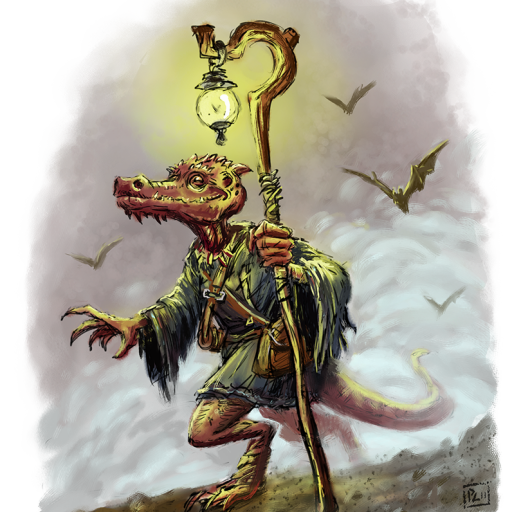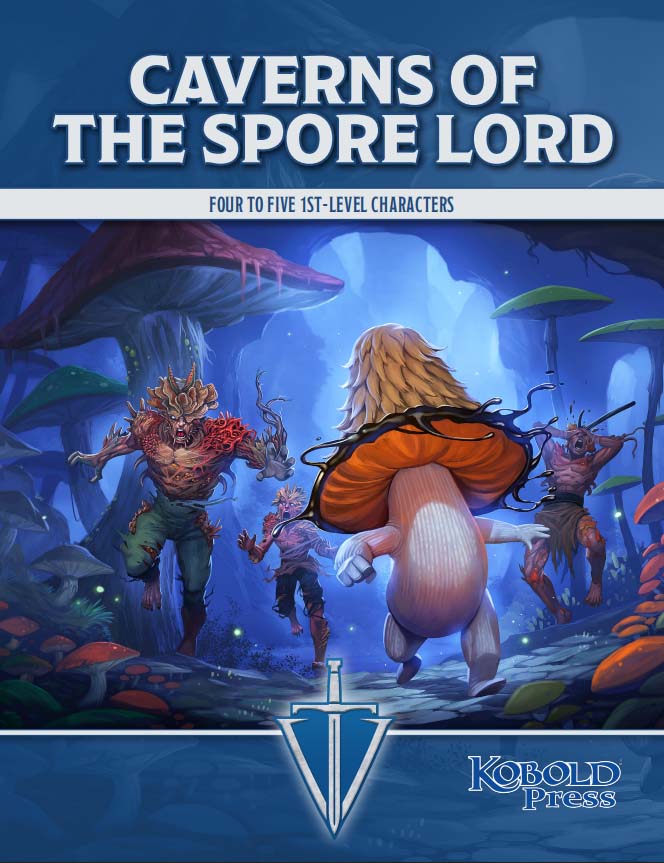
Playtest Packet #2 for Project Black Flag has been available since last Friday. There are lots of questions, so we asked our Senior Game Designer, Celeste Conowitch, to reveal her thoughts in a new design diary. Look for this as a monthly feature during playtesting.
Hey all! My name is Celeste Conowitch. I’m writing to give you an in-depth look at our design goals for Project Black Flag and what we want to accomplish with Playtest Packet #2.
What We’ve Learned
We released Playtest Packet #1 last month, and gamers gave us great feedback on that. We learned:
- Some lineage and heritage options seemed overpowered/underpowered. We’re using your feedback to rebalance playtest options as we build out a full catalogue of lineage and heritage choices.
- You want heritage options presented differently. We will use this feedback as a lens to determine how information should appear in the next version of lineage/heritage options.
- You are ready to let go of PC alignment. We’re discarding alignment as a core element of character creation.
- You don’t want to choose between ability score increases and choosing a talent. This is already reflected in Playtest Packet #2! Let us know if you like our solution.
- Some talent options seemed overpowered/underpowered. Again, we’re using that input to help rebalance options as we build out the talent catalogue.
Those are just the highlights. There’s more! We read everything and are paying attention to your comments. Thank you for taking the time to think and respond.
Playtest Packet #2: What’s New?
One of the loudest responses we heard in the wake of Packet #1 was GIVE US MORE. So we loaded Playtest Packet #2 with elements that shape the foundation of our game. Here’s a quick list of those.
Luck Replaced Inspiration
Most of us agree that 5E inspiration falls flat. So, after much noodling, we’re trying the Luck mechanic as a replacement. It probably needs some tuning, but here’s why we went this route:
- Luck allows players to fail forward. Everyone gets terrible turns where it feels like your dice are cursed and you can’t hit anything. Maybe you get a couple in a row. Ugh. Enter Luck points! Missing with an attack still hurts, but instead of grumbling and drumming fingers until your next turn, you gain a resource that gives you something to look forward to next time.
- Luck isn’t a new job for the GM. Players track and maintain Luck without GM intervention. We believe we’ve landed right where we want to be with a low-maintenance system that helps every round of combat feel a little more fun.
- Luck is a building block. Luck has a little more going on than the various inspiration fixes floating around. A foundational resource like this allows us to dream about different ways it could be used going forward. The Touch of Luck talent is a preview of these kind of tricks, but we’re scheming ways it might work with luck-spinning subclasses, spells, magic items, and more.
- Luck is still a reward-based system. This is one thing inspiration did well, and our replacement needed to give GMs a way to reward players for bold creative choices. We also like that it opens up another kind of reward (in addition to XP and treasure) for surviving encounters or adventure arcs.
Note to Playtesters: As we watch the buzz around Playtest Packet #2, we’re seeing two big camps emerge about the name of the Luck mechanic. One camp likes it, and one camp wants a different name. If you have an opinion on the topic, please cast your vote in the Playtest Packet #2 feedback form. It really matters!
Changes to Classes
The heart of Playtest Packet #2 introduced new versions of the fighter and the wizard—foundational classes in the game.
First, the big question: Why are there only 8 levels?
The answer: It is critical we get these right before we move onto higher levels. We need input on the way we walk before we start talking about flying.
So, what changed?
We spitballed a bunch of ideas in the playtest of fighter and wizard. It might be easy to miss what changed. Here’s a roundup for those familiar with the current 5E versions of those classes.
FIGHTERS
- You choose whether your fighter is proficient with Strength or Dexterity saves. This small change helps you make a quick fighter instead of a tough fighter.
- Last Stand replaces Second Wind. We think Last Stand scales better, and it’s a reaction, as opposed to Second Wind’s bonus action. Fighters should be hard to kill! So we gave them a feature that lets them come back from the brink of death to save the day (as they do in all good books/movies/shows).
- Martial Action replaces Fighting Style. Martial Action provides the fighter with an active, tactical “thing” to do in combat, whereas Fighting Styles tended to grant static bonuses. We like action.
- Multiattack is the new name for Extra Attack. It works the same, but we changed the name to help new players understand that it doesn’t give you a separate Attack action, just more attacks in that one action. Multiattack now also matches the naming convention used in monster stat blocks, which seemed useful.
- Fighter subclasses are called Disciplines instead of Martial Archetypes. It didn’t feel cool enough that fighter, ranger, and rogue subclasses in 5E were all called archetypes. So we changed it.
- Improvement replaces Ability Score Improvement. Improvement has you increase an ability score by one and then choose a talent from the Martial Talent list. If you prefer simplicity, take the Physical Prowess talent. It lets you increase your STR, DEX, or CON ability score by one, replicating the current 2-point ability score increase in 5E.
WIZARDS
- Wizards no longer have any weapon proficiencies. We did this to make base classes feel more different from one another.
- Wizards now have a separate Rituals Known feature. This allows them to pick spells that are useful outside of combat without having to sacrifice good combat spells.
- There are no class-specific spell lists. Wizards draw their spells from the Arcane Circle spell list, which all arcane classes use.
- Wizards have a new feature called Magic Sense. This allows them to perceive magic without needing to cast a spell for it.
- Wizards gain their subclass at 3rd level instead of 2nd level. This helps standardize subclass progression for every class.
- Improvement replaces Ability Score Improvement. Improvement has you increase an ability score by one and then choose a talent from the Martial Talent list. If you prefer simplicity, take the Mental Prowess talent. It lets you increase your INT, WIS, or CHA ability score by one, replicating the current 2-point ability score increase in 5E.
What Are We Working On Next?
In all the excitement, let’s take a breath, cozy up to the campfire, and whisper of days to come.
How are martial classes getting better?

This topic is on a lot of minds, and for good reason. Here’s what we’re doing to bridge the power gap between martials and magic-users:
- Working on a catalogue of killer Martial Talents (including a talent to let any fighter dip into Weapon Master stunts). We imagine the Martial Talent list will at least double the size of the Magic Talent list when all is said and done. And it should. Casters already have plenty of choices in their spell catalogues. This lets fighty-types have their own list of options to mull over.
- Reexamining the way base weapons, equipment, and armor work to make them more exciting.
- Making martials the champs of the bonus action. The Martial Action feature in the fighter class points this way, but that is just a first step. We are tinkering with scalable upgrades to features like Martial Action and limiting bonus action options available to full caster classes.
What else?
So much more. More all the time. Three big things:
- Getting more base classes ready for playtesting
- Rebalancing playtest talents and expanding talent lists
- Crafting encounter building tools
In Closing
Once more we want to thank you, the playtesters, for taking time to provide thoughtful feedback and constructive criticism. Kobold Press is a small team of real humans—er, kobolds—fighting to make a game we love for the gamers we love. Those of you who see, hear, and help us succeed are the real big damn heroes.
Its time to head back to the Warrens to work on that next packet!
Until then, happy rolling!
—Celeste Conowitch, Senior Game Designer
Have more questions? Check out our Project Black Flag FAQ page. We’ll update this page weekly to provide a more transparent view of our process.
Playtesting for Packet #2 ends on April 3 at 11:59 p.m. (PDT), so submit your playtest feedback before then!


Love this and we appreciate all the insight on the progress of the game.. can’t wait for future playtest and day one of the kickstarter
Great stuff! Love the idea of lucky fighters or lucky sorcerers!
It’s a play test and makes completely sense why you’d make sure you have the foundations of the key classes right before developing the whole thing.
Really like the sound of all this.
Yesss, more insight into the design process! (we alllways want more!)
I’m loving all the changes so far (and am in the process of running playtest games). I like the Luck mechanic and name, though also won’t mind if you have to rename it.
Also REALLY digging the Magic Sense (something I’ve sorely missed in dnd), and the separation out of rituals.
You and the team are doing a great job!
I love this look into the process and super excited for where this is going.
Genuine question: how do you feel that they’ve said their system would be backwards compatible, yet feels like it is just following in One DnD’s footsteps. Example: They moved the wizard subclass to 3rd level, how do you make that backwards compatible?
It isn’t hard for wizard, as you can just move the 2nd level features to 3rd and bam- converted. But I more imagine when they say ‘backwards compatible’ they mean ‘you can run old modules and games’.
For One DnD, because they own the original content, it’s much easier for them. They have said repeatedly they will update subclasses outside the PHB to fit within the new edition, thus making One DnD fully backwards compatible with offical 5e content (funny how that works out isn’t it).
I kind of agree with this so far. Underwhelmed to say the least, and the few mechanics they have really changed aren’t in the direction I’d want. Their new Anti-luck mechanic is the antithesis of luck. It is like those options in video games where you can choose to adjust the rolls to make them more uniform. Luck is swingy. This is the opposite of that, this is boring and worse it has a ton of overhead.
For me, backwards compatible doesn’t mean being lock step with 5E. It just means that I can take a module or resource material and use it with KP’s system while needing to make only a few modifications to the module to do so. I feel PBF could be a little more creative, change some more things, and still be ‘compatible’ with 5E modules etc…
Yes we wanted more and you gave us that. Unfortunately you didn’t give us any extra space for feedback so how’s that supposed to work? Three tiny paragraphs isn’t even enough space to point out the glaring balance issues let alone provide any type of other feedback. Why aren’t you asking specific questions for each new feature? I’m not going to fill out the survey 10 times because I need to detail everything myself.
Mechanically what we’ve seen is a mess and it’s not going to get any better if your experienced playtesters are just going to give up on the process. And I suspect most of them already have. I know I’m done.
They really need to expand and focus their surveys better. Three blank boxes with limited character counts doesn’t really do the trick. Especially as the playtest packets get more depth. I will say that WoTC does a decent job with their surveys. A mix of the focused along with some freeform would be good.
Sounds great! The changes to fighter and wizard specifically.
Are you considering balancing the role of Dexterity? Apologies if I missed that. Dex is overpowered.
I would leave the fighter fighting styles as they were but still gave them those martial actions (more of theese would also be needed as it is still a far cry from a solution to the problem with martials against casters) . More self healing for meele fighters would be great. When you do Weapons you should give weapon specific action so that meele combat could be more viable then it is now in dnd. For example something like steady aim for rapier ( could go like: if you have multiattack you can forgo one of the attacks to aim the weapon at a weak point of your opponent granting you autocrit dmg on a successfull attack.) Also i would consider splitting charisma and dexterity as they were the most powerfull of the stats in dnd into (for dex) Dexterity (how dextrous are you with your body and movements) and agility (how agile and precise are you with your hands) (for charisma) Willpower (how strong is your mind and determination) and charisma (how easy you decive or persuade someone).
Hey everybody, Blog Editor Jeff here. I’m locking comments on this and encouraging everyone to take discussion over to the Discord channel: https://discord.gg/koboldpress
You’re free to have opinions, and they can be positive or negative. But for Black Flag purposes, that’s the place for discussion!
JQ